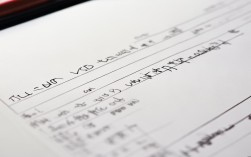雅思描述性作文是雅思写作Task 1中的一种重要类型,主要考察考生对视觉信息(如图表、地图、流程图等)的观察能力、数据筛选能力以及逻辑清晰的语言表达能力,这类作文要求考生在20分钟内完成150词以上的写作,既要准确呈现关键信息,又要通过合理的结构和连贯的语言让描述层次分明,以下从核心要素、结构框架、语言技巧和常见误区四个方面,详细解析如何写好雅思描述性作文。

核心要素:精准捕捉关键信息
描述性作文的根基在于“读懂材料”,无论是动态图表(如线图、柱状图)还是静态图表(如饼图、表格),抑或是地图、流程图,考生需首先明确以下核心要素:
图表类型与主题
- 动态图表(线图、柱状图、饼图变化)需关注“时间跨度”和“数据变化趋势”(上升、下降、波动);
- 静态图表(饼图、表格、柱状图对比)需关注“分类数据”和“极值”(最大值、最小值、平均值);
- 地图题需关注“地理位置变化”(新增/建筑拆除、方向描述);
- 流程图需关注“步骤顺序”和“逻辑关系”(原材料、中间产物、最终产品)。
数据筛选与比较
雅思图表数据往往繁杂,考生需学会“抓大放小”:
- 突出极值:最高/最低点、最大/最小比例(如“The figure peaked at 80% in 2025”);
- 对比差异:同类数据间的显著差异(如“A was twice as much as B”);
- 概括趋势:整体变化方向(如“a steady increase”“a slight decline”)。
单位与时间范围
图表中的“单位”(million, percentage, tons)和“时间范围”(1990-2025, from January to June)是易错点,需在描述中准确体现,避免遗漏或混淆。
结构框架:清晰呈现逻辑
一篇高分描述性作文需遵循“总-分-总”结构,段落分明,过渡自然,以下是通用框架:
开头段(Introduction):概述图表核心信息 图表类型(The bar chart/map illustrates...)、时间/范围(between 2025 and 2025)、核心主题(the changes in the number of...)。
- 句式:避免直接复制图表标题,用同义替换改写(如“show”→“illustrate/depict/demonstrate”)。
- 示例:“The line chart illustrates the percentage of people aged 15-64 in three countries—Canada, Germany, and Japan—from 2000 to 2025.”
主体段(Body):分点描述关键信息
根据数据复杂度分2-3段,每段聚焦1-2个核心点,避免信息堆砌。
- 动态图表:按时间顺序描述趋势,结合数据支撑(如“From 2000 to 2010, the figure in Canada rose steadily from 65% to 70%, while that in Japan declined slightly from 68% to 66%.”);
- 静态图表:按数据大小或分类描述,突出对比(如“Among the four categories, Electronics accounted for the largest proportion (35%), followed by Clothing (25%), with Food and Books making up 20% and 20% respectively.”);
- 地图/流程图:按空间顺序或步骤顺序描述,使用方位词(north of, to the left of)或连接词(first, then, finally)。
结尾段(Conclusion):总结核心趋势或特征 概括图表最显著的变化或结论(无需重复数据),如“Overall, Canada experienced a growing trend in the working-age population, whereas Japan saw a slight decrease during the same period.”
语言技巧:提升描述准确性与连贯性
数据表达多样化
避免重复使用“show/has”,替换为“account for, constitute, represent, reach, hit, climb, drop”等动词;分数、倍数表达需准确(如“one-third, twice as much as, a quarter of”)。
逻辑连接词自然过渡
使用连接词串联句子和段落,使文章流畅:
- 表对比:while, whereas, on the other hand;
- 表趋势:over time, gradually, dramatically;
- 表举例:for example, such as, including。
句式灵活多变
结合简单句、复合句(定语从句、状语从句)和复杂句(分词结构、倒装句),避免单调重复。
- 简单句:“The number of students increased from 100 to 200.”
- 复合句:“The number of students, which was 100 in 2010, doubled to 200 in 2025.”
常见误区与注意事项
- 信息过载或遗漏:只描述极值和主要趋势,忽略次要数据;或遗漏关键信息(如图表标题、单位)。
- 主观臆断:添加图表未体现的信息(如原因分析、个人观点),描述性作文需“客观陈述”。
- 时态错误:动态图表用过去时(描述历史数据)或现在时(描述普遍趋势);地图/流程图用一般现在时。
- 数据不准确:混淆数据(如将“30%”写成“30 people”),需反复核对图表。
表格:雅思描述性作文常用词汇与句型
| 类型 | 常用词汇 | 核心句型 |
|---|---|---|
| 动态图表(趋势) | rise, increase, grow, decline, drop, fluctuate, peak, reach | The number of... + 动词 + from... to... / A + 动词 + while/whereas + B + 动词. |
| 静态图表(对比) | account for, constitute, make up, dominate, surpass | A accounted for the largest proportion (XX%), followed by B (XX%). |
| 地图/流程图(顺序) | locate, situated, adjacent to, first, then, finally, subsequently | The new building is located to the north of the old one. / First, raw materials are collected, then... |
FAQs
Q1:雅思描述性作文中,是否需要提及图表中的所有数据?
A1:不需要,雅思图表数据往往较多,考生应筛选“关键数据”(极值、显著差异、整体趋势),避免堆砌细节,柱状图若有6个柱子,可描述最高、最低及变化明显的2-3个,其余用“others accounted for the remaining...”概括。
Q2:描述地图题时,如何避免方位词混乱?
A2:可固定参照物(如以“the school”为中心),按“上北下南左西右东”原则描述,并使用“to the north/south/east/west of...”“adjacent to...”“opposite...”等短语。“The library was built to the east of the park, and a new road was constructed adjacent to it.”











